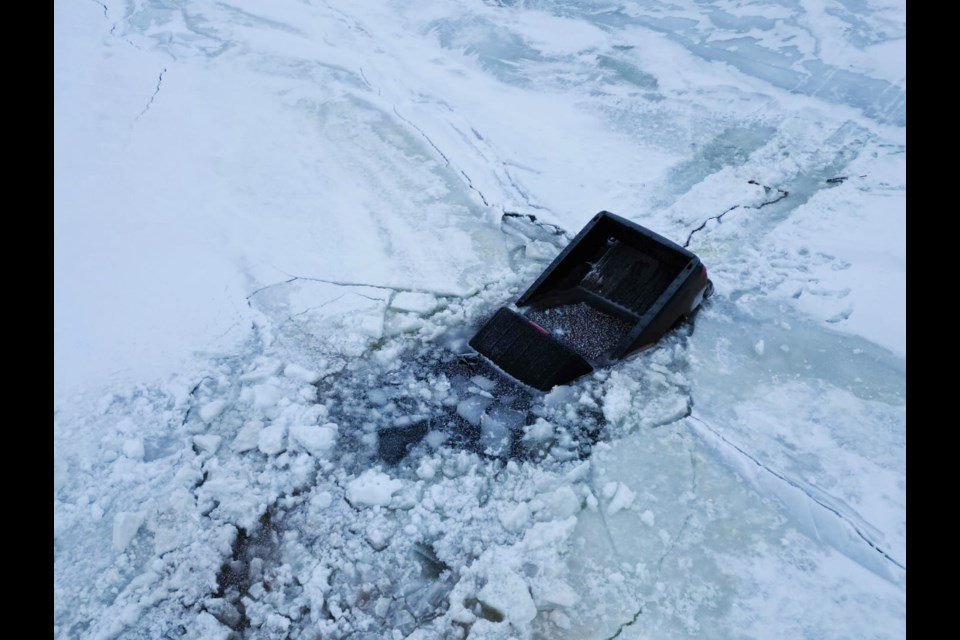Fishing huts dot frozen lakes all over Canadian lakes, including Oak Lake where people are hauling out some good looking fish. However, this week a truck had to be hauled out.
Yes, a truck went through the lake ice on the weekend. The driver got out, no injuries were reported.
With warm winter weather in late January/early February, the RM of Deloraine-Winchester posted a notice on Feb. 6 advising sport fishers to remove their huts sooner than later. “Due to mild weather conditions, there is concern that the shorelines and other areas may be compromised and less than ideal at this time. You may want to consider removing ice shacks off of any water bodies ASAP.”
Advice from the RM of Sifton Fire Department: “Stay away from aerators, open water, ice heaves, or moving water.”
Vehicles, usually trucks attending a fishing hut or attempting to haul a hut off the ice, break through lake ice all too often. This year, over a week ago a truck broke through Lake Nipissing near Lake Superior, and in January a truck went through the ice near Rainy River. No injuries were reported. But lives can be lost.
When a vehicle becomes fully submerged surrounding water pressure makes opening the door virtually impossible and water can render electric windows inoperable. An Ontario automotive site says, “If you must drive on ice, unbuckle your seatbelt and roll down the window.” Just a precaution.
While there’s no information about who the unfortunate driver was this past weekend on Oak Lake, the water was shallow enough that the truck’s frontend hit lake bottom.
Jayare Gardiner’s Facebook has several drone photos of the unfortunate incident. He posted, “A pressure ridge opened up last night on Oak Lake between the west side and Cherry Point and a truck went in.”
Clear ice is regarded as the safest, and ice safety sites recommend ice thickness of at least 12 inches (30 cm) for a regular sized half-ton truck to drive on and three to our inches (10 cm) to walk on. Skidoos need five-inch or 12 cm thickness. Rivers are considered unsafe.
Ice to avoid:
- Areas of slush
- Open holes
- Ice near moving water (areas with currents such as rivers)
- Pressure ridges
- Ice that has thawed and refrozen
Risk factors:
- Currents or wind action can shift entire ice sheets and create pressure ridges
- Snow acts as a blanket preventing hardening
- Sudden temperature changes can cause ice to crack or split into layers
In cold water, after the initial shock a swimmer has about 10 minutes of ‘meaningful movement’ before the cold weakens nerves and muscles.
Take precautions, be mindful of changing conditions and don’t go on the ice in the dark.




